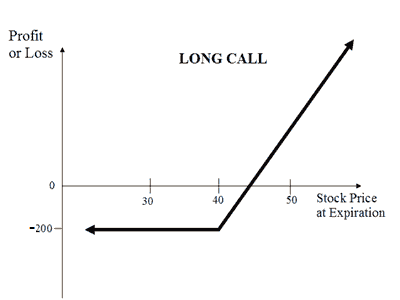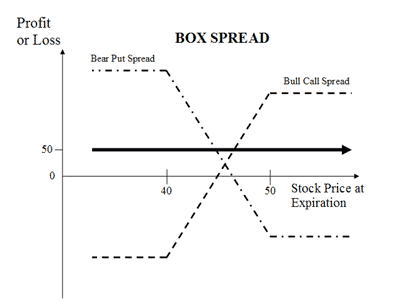 Zerodha (Trading & Demat Account)
Zerodha (Trading & Demat Account)
FREE Equity Delivery and MF
Flat ₹20/trade Intra-day/F&O
 Zerodha (Trading & Demat Account)
Zerodha (Trading & Demat Account)
FREE Equity Delivery and MF
Flat ₹20/trade Intra-day/F&O

|
|
Compare Long Call and Box Spread (Arbitrage) options trading strategies. Find similarities and differences between Long Call and Box Spread (Arbitrage) strategies. Find the best options trading strategy for your trading needs.
| Long Call | Box Spread (Arbitrage) | |
|---|---|---|
 |
 |
|
| About Strategy | A Long Call Option trading strategy is one of the basic strategies. In this strategy, a trader is Bullish in his market view and expects the market to rise in near future. The strategy involves taking a single position of buying a Call Option (either ITM, ATM or OTM). This strategy has limited risk (max loss is premium paid) and unlimited profit potential. When the trader goes long on call, the trader buys a Call Option and later sells it to earn profits if the price of the underlying asset goes up. When the trader buys a call, he pays the option premium in exchange for the right (but not the obligation) to buy share or index at a fixed price by a certain expiry date. This premium is the only amount at-the-risk for trader in case the mark... Read More | Box Spread (also known as Long Box) is an arbitrage strategy. It involves buying a Bull Call Spread (1 ITM and I OTM Call) together with the corresponding Bear Put Spread (1 ITM and 1 OTM Put), with both spreads having the same strike prices and expiration dates. The strategy is called Box Spread as it is combination of 2 spreads (4 trades) and the profit/loss calculated together as 1 trade. Note that the total cost of the box remain same irrespective to the price movement of underlying security in any direction. The expiration value of the box spread is actually the difference between the strike prices of the options involved. The Long Box strategy is opposite to Short Box strategy. It is used when the spreads are under-priced with respe... Read More |
| Market View | Bullish | Neutral |
| Strategy Level | Beginners | Advance |
| Options Type | Call | Call + Put |
| Number of Positions | 1 | 4 |
| Risk Profile | Limited | None |
| Reward Profile | Unlimited | Limited |
| Breakeven Point | Strike Price + Premium | |
| Long Call | Box Spread (Arbitrage) | |
|---|---|---|
| When to use? | A long call Option strategy works well when you expect the underlying instrument to move positively in the recent future. If you expect XYZ company to do well in near future then you can buy Call Options of the company. You will earn the profit if the price of the company shares closes above the Strike Price on the expiry date. However, if underlying shares don't do well and move downwards on expiry date you will incur losses (i.e. lose premium paid). |
Being risks free arbitrage strategy, this strategy can earn better return than earnings in interest from fixed deposits. The earning from this strategy varies with the strike price chosen by the trader. i.e. Earning from strike price '10400, 10700' will be different from strike price combination of '9800,11000'. The long box strategy should be used when the component spreads are underpriced in relation to their expiration values. In most cases, the trader has to hold the position till expiry to gain the benefits of the price difference. Note: If the spreads are overprices, another strategy named Short Box can be used for a profit. This strategy should be used by advanced traders as the gains are minimal. The brokerage payable when implementing this strategy can take away all the profits. This strategy should only be implemented when the fees paid are lower than the expected profit. |
| Market View | Bullish When you're expecting a rise in the price of the underlying and increase in volatility. |
Neutral The market view for this strategy is neutral. The movement in underlying security doesn't affect the outcome (profit/loss). This arbitrage strategy is to earn small profits irrespective of the market movements in any direction. |
| Action |
A long call strategy involves buying a call option only. So if you expect Reliance to do well in near future then you can buy Call Options of Reliance. You will earn a profit if the price of Reliance shares closes above the Strike price on the expiry date. However, if Reliance shares don't move up within the expiry date you will incur losses. |
Say for XYZ stock, the component spreads are underpriced in relation to their expiration values. The trader could execute Long Box strategy by buying 1 ITM Call and 1 ITM Put while selling 1 OTM Call and 1 OTM Put. There is no risk of loss while the profit potential would be the difference between two strike prices minus net premium. |
| Breakeven Point | Strike Price + Premium The break-even point for Long Call strategy is the sum of the strike price and premium paid. Traders earn profits if the price of the underlying asset moves above the break-even point. Traders loose premium if the price of the underlying asset falls below the break-even point. |
| Long Call | Box Spread (Arbitrage) | |
|---|---|---|
| Risks | Limited The risk is limited to the premium paid for the call option irrespective of the price of the underlying on the expiration date.
|
None The Box Spread Options Strategy is a relatively risk-free strategy. There is no risk in the overall position because the losses in one spread will be neutralized by the gains in the other spread. The trades are also risk-free as they are executed on an exchange and therefore cleared and guaranteed by the exchange. The small risks of this strategy include:
|
| Rewards | Unlimited There is no limit to maximum profit attainable in the long call option strategy. The trade gets profitable when price of the underlying is greater than strike price plus premium.
|
Limited The reward in this strategy is the difference between the total cost of the box spread and its expiration value. Being an arbitrage strategy, the profits are very small. It's an extremely low-risk options trading strategy. |
| Maximum Profit Scenario | Underlying closes above the strike price on expiry. |
|
| Maximum Loss Scenario | Underlying closes below the strike price on expiry. |
| Long Call | Box Spread (Arbitrage) | |
|---|---|---|
| Advantages | Buying a Call Option instead of the underlying allows you to gain more profits by investing less and limiting your losses to minimum. |
|
| Disadvantage | Call options have a limited lifespan. So, in case the price of your underlying stock is not higher than the strike price before the expiry date, the call option will expire worthlessly and you will lose the premium paid. |
|
| Simillar Strategies | Protective Put, Covered Put/Married Put, Bull Call Spread |


FREE Intraday Trading (Eq, F&O)
Flat ₹20 Per Trade in F&O
|
|